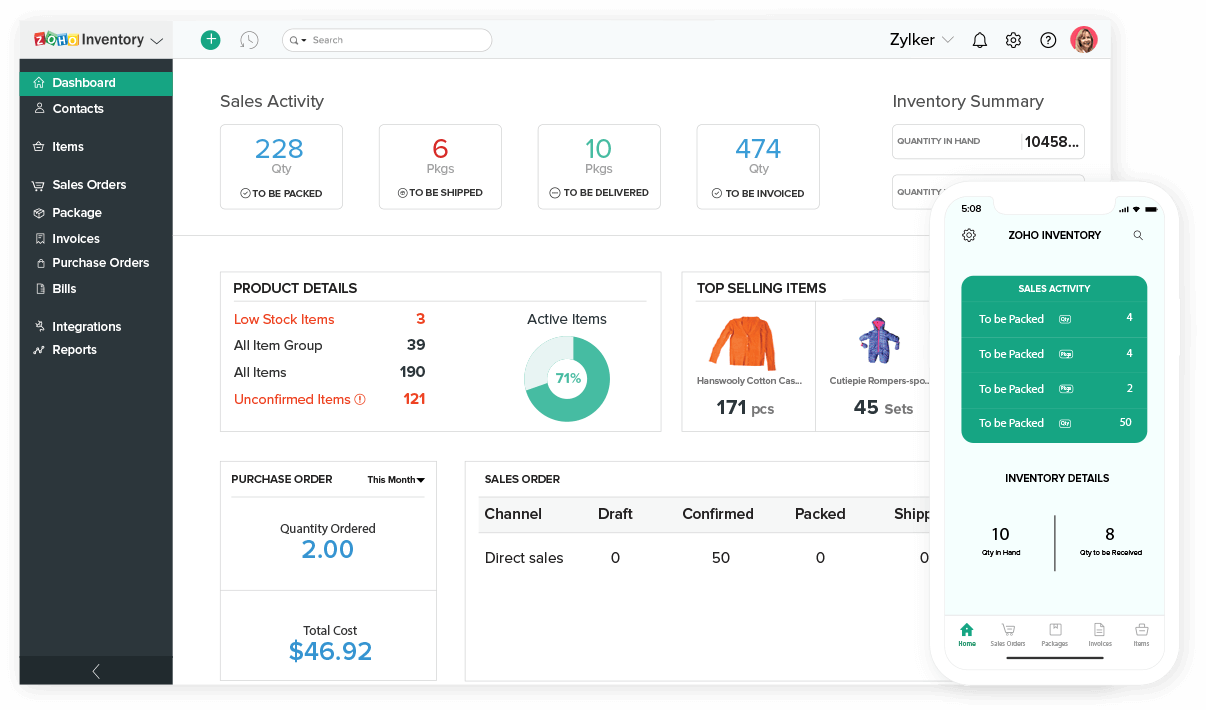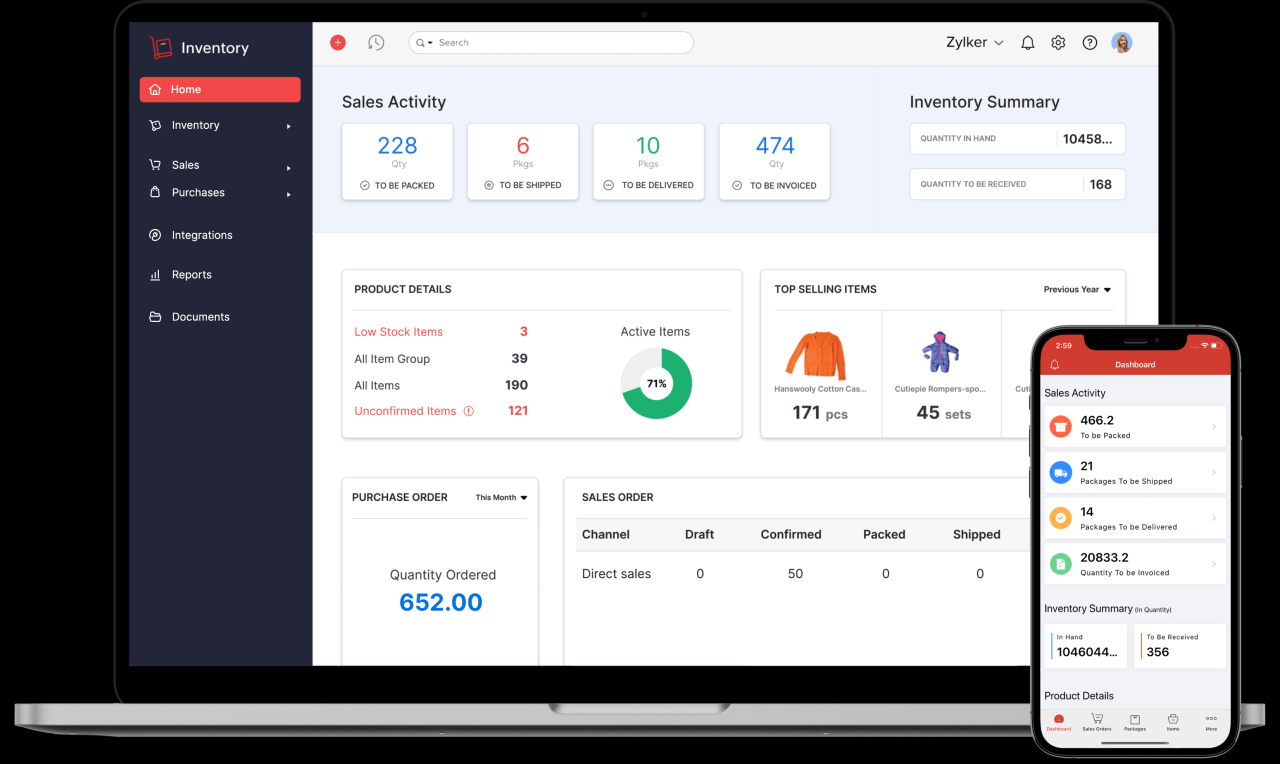
The Unseen Engine of Growth: Why Business Inventory Sales Software is Indispensable in Modern Commerce
In the relentless rhythm of modern commerce, where consumer expectations are sky-high and competition is fierce, businesses are constantly seeking an edge. While innovative products, clever marketing, and exceptional customer service are undoubtedly crucial, the foundational bedrock of a successful enterprise often lies in its operational efficiency. At the heart of this efficiency, particularly for businesses dealing with physical goods, is the strategic management of inventory and sales. This is where Business Inventory Sales Software emerges not just as a useful tool, but as an indispensable engine of growth.
Gone are the days when spreadsheets and manual counts could reliably steer a business. Today’s dynamic marketplace demands real-time accuracy, seamless integration, and predictive intelligence. This article delves into the critical role of business inventory sales software, exploring its core functionalities, transformative benefits, and why adopting such a system is no longer a luxury, but a strategic imperative for survival and prosperity.
The Evolving Landscape of Commerce: A Call for Digital Transformation
The digital revolution has reshaped consumer behavior and business operations alike. E-commerce giants have set new benchmarks for speed, accuracy, and convenience, forcing even traditional brick-and-mortar stores to adapt. Customers now expect instant gratification, personalized experiences, and transparent information regarding product availability.
Without a robust inventory sales system, businesses face a myriad of crippling challenges:
- Stockouts and Overstock: Misjudging demand leads to either lost sales opportunities (stockouts) or capital tied up in excess inventory (overstock), both impacting profitability.
- Manual Errors and Inaccuracies: Human error in manual data entry is inevitable, leading to discrepancies, incorrect orders, and frustrated customers.
- Disconnected Systems: Siloed departments – sales, warehouse, accounting – often operate in isolation, causing communication breakdowns and operational inefficiencies.
- Poor Customer Experience: Slow order fulfillment, incorrect shipments, or inability to provide real-time product availability erode customer trust and loyalty.
- Lack of Actionable Insights: Without comprehensive data, strategic decisions regarding purchasing, pricing, and promotions become guesswork rather than informed choices.
These challenges highlight a clear need for a unified, intelligent system that can bring order to the chaos and empower businesses to thrive.
What Exactly is Business Inventory Sales Software?
At its core, Business Inventory Sales Software is a comprehensive digital solution designed to manage and automate the entire lifecycle of a product, from procurement and storage to sale and post-sale service. It unifies various critical business functions into a single, cohesive platform, providing a holistic view of operations.
More than just tracking stock levels, this software integrates:
- Inventory Management: Real-time tracking of stock across multiple locations, product variants, bundles, and kits.
- Sales Order Management: Processing customer orders, managing quotes, invoices, and returns.
- Customer Relationship Management (CRM): Storing customer data, purchase history, and interactions.
- Purchasing and Vendor Management: Automating purchase orders, tracking supplier performance, and managing vendor relationships.
- Reporting and Analytics: Generating insightful reports on sales trends, inventory turnover, profitability, and customer behavior.
- Integration Capabilities: Connecting with e-commerce platforms, Point-of-Sale (POS) systems, accounting software, and shipping carriers.
By bringing these disparate functions under one digital roof, the software creates a powerful ecosystem that optimizes every step of the sales and inventory process.
Core Features: The Engine of Efficiency
To truly appreciate the power of this software, let’s explore its key features in detail:
-
Real-time Inventory Tracking: This is perhaps the most fundamental feature. It provides an immediate, accurate view of stock levels across all warehouses, stores, or distribution centers. Businesses can track individual items, batches, serial numbers, and even expiration dates. This eliminates guesswork, prevents overselling, and ensures products are available when and where customers need them.
-
Sales Order Management: From the moment a customer places an order, the software takes over. It manages order entry, verifies stock availability, processes payments, generates invoices, and schedules fulfillment. It can handle various order types, including standard, back-orders, and custom orders, ensuring a smooth and accurate sales workflow.
-
Customer Relationship Management (CRM) Integration: Understanding your customers is paramount. Integrated CRM features allow businesses to store detailed customer profiles, track purchase history, manage communications, and identify loyal customers. This data empowers personalized marketing efforts, improves customer service, and fosters long-term relationships.
-
Automated Purchasing and Vendor Management: The software can automate reorder points based on sales velocity and lead times, generating purchase orders automatically when stock falls below a certain threshold. It manages vendor information, pricing agreements, and delivery schedules, streamlining the procurement process and minimizing manual intervention.
-
Multi-Channel and Multi-Location Management: For businesses operating across multiple sales channels (online, brick-and-mortar, wholesale) or with multiple physical locations, the software provides a centralized hub. It synchronizes inventory levels across all channels, preventing overselling and providing a unified view of stock regardless of its location.
-
Advanced Reporting and Analytics: This feature transforms raw data into actionable insights. Businesses can generate reports on sales performance by product, customer, or region; analyze inventory turnover rates; track profitability margins; and identify best-selling or slow-moving items. These insights are crucial for strategic planning, forecasting, and making informed business decisions.
-
Barcode Scanning and Labeling: Integration with barcode scanners significantly speeds up inventory counts, receiving, picking, and packing processes, while drastically reducing human error. The software can also generate custom labels for products and shelves.
-
Returns Management (RMA): Handling returns efficiently is vital for customer satisfaction. The software streamlines the return process, from generating Return Merchandise Authorization (RMA) numbers to tracking returned items and processing refunds or exchanges.
-
Integration with E-commerce, POS, and Accounting Systems: Seamless integration with popular e-commerce platforms (Shopify, WooCommerce), Point-of-Sale (POS) systems (Square, Lightspeed), and accounting software (QuickBooks, Xero) ensures data consistency across all business functions, eliminating redundant data entry and improving overall data accuracy.
-
Mobile Accessibility: Many modern solutions offer mobile apps or responsive web interfaces, allowing business owners and staff to manage inventory, process orders, and access critical data on the go, from anywhere, at any time.
Transformative Benefits: Why Invest?
The comprehensive features of business inventory sales software translate into tangible, transformative benefits that directly impact a company’s bottom line and competitive standing:
-
Enhanced Accuracy and Reduced Errors: By automating data entry and tracking, the software virtually eliminates manual errors. This leads to accurate stock counts, correct order fulfillment, and fewer discrepancies, saving time and preventing costly mistakes.
-
Optimized Inventory Levels: With real-time data and predictive analytics, businesses can maintain optimal inventory levels. This minimizes the risk of stockouts (and lost sales) and reduces overstocking (freeing up capital and reducing carrying costs). Better cash flow and improved profitability are direct results.
-
Improved Operational Efficiency: Automation of routine tasks – from generating purchase orders to updating stock levels after a sale – frees up valuable employee time, allowing staff to focus on more strategic activities. This leads to increased productivity and streamlined workflows.
-
Superior Customer Experience: Accurate stock information, faster order processing, and efficient returns management directly contribute to higher customer satisfaction. Customers receive the right products on time, leading to increased loyalty, positive reviews, and repeat business.
-
Data-Driven Decision Making: The wealth of data generated by the software provides invaluable insights into sales trends, customer behavior, and inventory performance. Business leaders can make informed decisions regarding product assortment, pricing strategies, marketing campaigns, and future growth initiatives.
-
Cost Savings: Reducing manual labor, minimizing stockouts, preventing overstocking, and optimizing purchasing processes all contribute to significant cost savings. Less waste, fewer carrying costs, and improved resource allocation directly boost profitability.
-
Scalability and Growth: As a business expands, its operational complexity grows exponentially. A robust inventory sales system can scale with the business, accommodating increased sales volume, new product lines, and additional locations without requiring a complete overhaul of its core processes. It provides the infrastructure for sustainable growth.
-
Competitive Advantage: Businesses leveraging this technology can react faster to market changes, fulfill orders more efficiently, and offer a better customer experience than competitors relying on outdated methods. This creates a significant competitive edge in a crowded marketplace.
Who Stands to Gain the Most?
While beneficial for nearly any business handling physical products, certain sectors stand to gain immensely:
- Retailers (Brick-and-Mortar & E-commerce): Managing diverse product catalogs, multiple sales channels, and fluctuating demand.
- Wholesale and Distribution: Handling large volumes, complex pricing structures, and extensive supply chains.
- Manufacturers: Tracking raw materials, work-in-progress, finished goods, and bill of materials.
- Service-based Businesses with Products: Salons selling beauty products, auto shops selling parts, etc.
- Small to Large Enterprises: From startups needing foundational systems to large corporations seeking to optimize complex global operations.
Choosing the Right Software: A Strategic Decision
Selecting the right business inventory sales software is a critical investment that requires careful consideration. Businesses should evaluate solutions based on:
- Specific Business Needs: Identify current pain points and future growth aspirations.
- Key Features: Ensure the software offers the essential functionalities required for your operations.
- Scalability: Can the system grow with your business without needing replacement?
- Ease of Use: An intuitive interface minimizes training time and maximizes user adoption.
- Integration Capabilities: How well does it integrate with your existing e-commerce, POS, and accounting systems?
- Vendor Reputation and Support: Look for reliable vendors with strong customer support and regular updates.
- Cost: Consider the total cost of ownership, including licensing fees, implementation, training, and ongoing support.
- Security: Ensure robust data security measures are in place to protect sensitive business and customer information.
Taking advantage of demos, free trials, and customer testimonials can provide invaluable insights before making a final decision.
The Future of Inventory Sales Software
The evolution of inventory sales software is far from over. Future trends include:
- AI and Machine Learning: For more sophisticated demand forecasting, personalized recommendations, and automated inventory optimization.
- Internet of Things (IoT): Smart shelves and sensors for real-time, automated inventory tracking.
- Blockchain Technology: For enhanced supply chain transparency and traceability.
- Further Mobile and Cloud Dominance: Enabling ubiquitous access and greater flexibility.
These advancements promise even greater efficiency and intelligence, further cementing the software’s role as a cornerstone of modern business.
Conclusion
In today’s fast-paced and interconnected commercial landscape, the ability to efficiently manage inventory and streamline sales operations is not merely an advantage – it is a prerequisite for survival and sustained growth. Business Inventory Sales Software stands as a powerful, integrated solution that addresses the complexities of modern commerce, transforming manual inefficiencies into automated precision.
By providing real-time visibility, enhancing accuracy, optimizing inventory levels, and empowering data-driven decisions, this software allows businesses to deliver superior customer experiences, reduce operational costs, and unlock their full growth potential. For any enterprise serious about thriving in the 21st century, investing in a robust business inventory sales software is not just a smart decision; it’s an indispensable strategic imperative.

